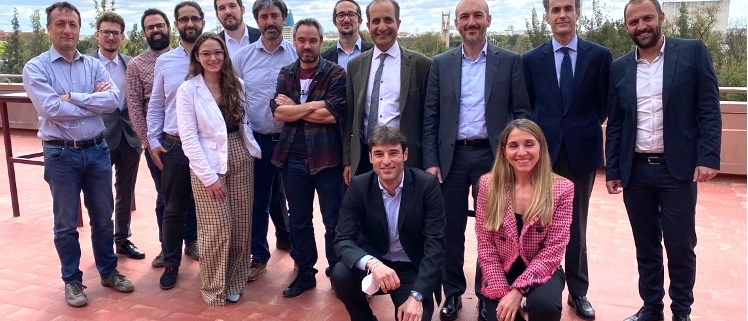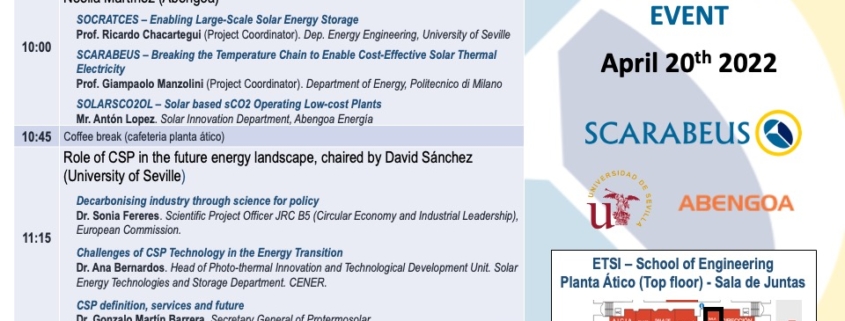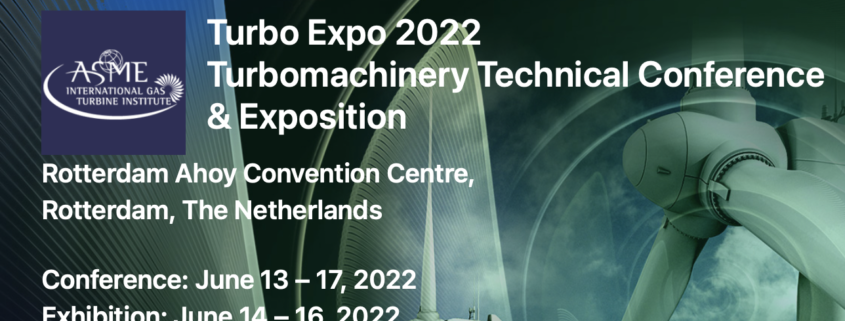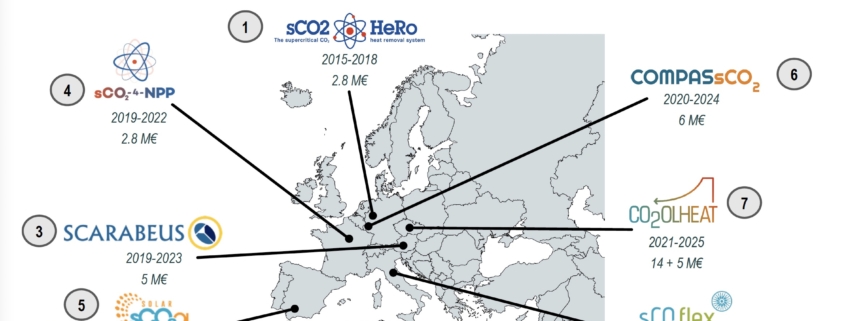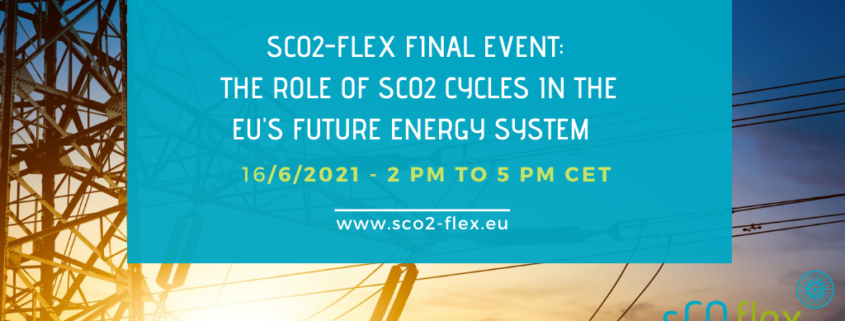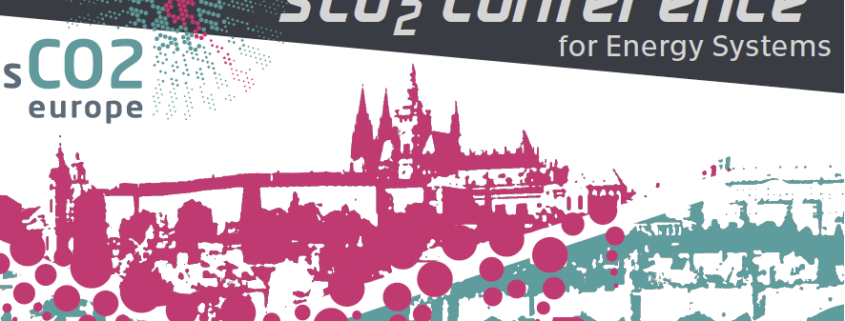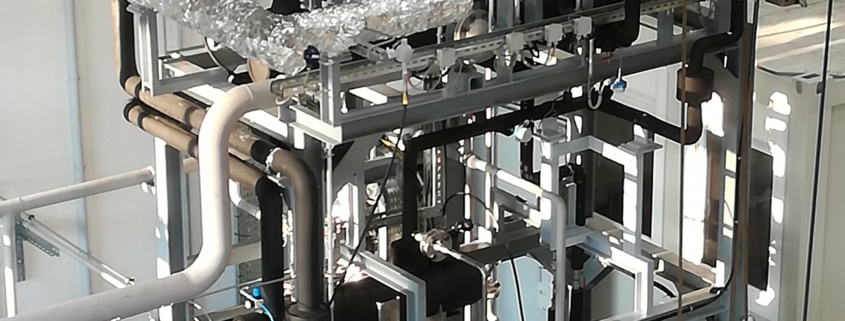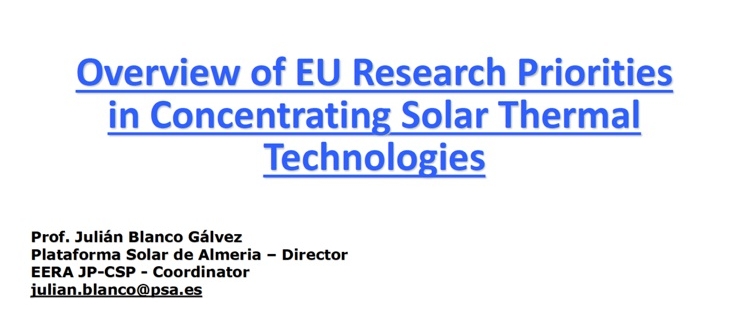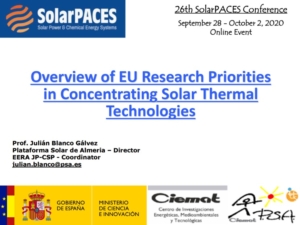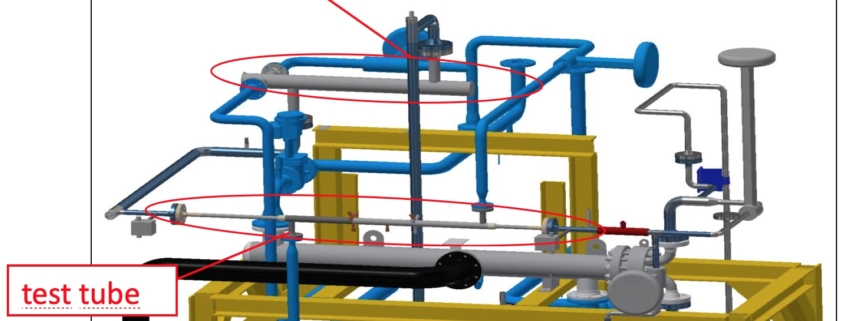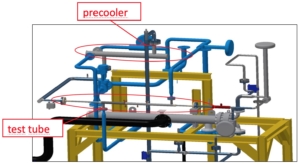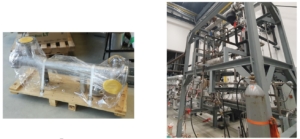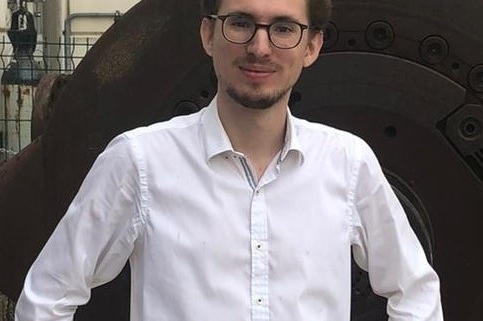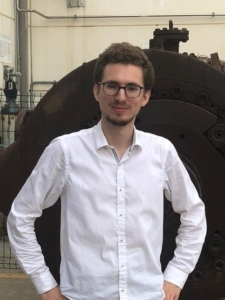Progress meeting held in Seville, hosted by University of Seville and Abengoa
The last progress meeting of the SCARABEUS project was held in Seville on the 21st and 22nd of April. It was a two-day meeting hosted by University of Seville, on the first day, and Abengoa, on the second.
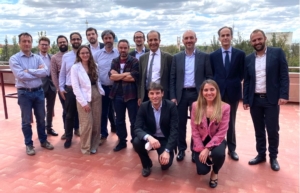
Group picture at the School of Engineering, University of Seville (standing from left: P. Iora, P. Rodríguez de Arriba, G. di Marcoberardino, A. López, V. Ilyes, E. Morosini, X. Guerif, P. David, F. Crespi, A. Sayma, M. Ruggiero, D. Sánchez, M. Fiori. Front: G. Manzolini, N. Martínez)
Sixteen delegates from the nine partners joined physically whereas other five joined remotely since they could not travel for different reasons. In the morning of the first day, a joint dissemination event along with other two projects funded by the Horizon 2020 programme of the European Commission was organized, with the agenda below.
| H2020 Networking Session SCARABEUS (Sala de Juntas) @ USE | ||||
| Time slot | What | |||
| April 20th | 09:45 | 10:00 | Welcome
Prof. David Sánchez, University of Seville |
|
| 10:00 | 10:45 | SOCRATCES, SCARABEUS & SOLARSCO2OL: key enabling technologies for fully dispatchable solar electricity (Chair: Dr. Noelia Martínez)
SOCRATCES – Enabling Large-Scale Solar Energy Storage Prof. Ricardo Chacartegui (Project Coordinator) Dep. Energy Engineering, University of Seville SCARABEUS – Breaking the Temperature Chain to Enable Cost-Effective Solar Thermal Electricity Prof. Giampaolo Manzolini (Project Coordinator) Department of Energy, Politecnico di Milano SOLARSCO2OL – Solar based sCO2 Operating Low-cost Plants. Mr. Antón Lopez Solar Innovation Department, Abengoa Energía |
||
| 10:45 | 11:15 | Coffee break | ||
| 11:15 | 12:45 | Role of CSP in the future energy landscape (Chair: Prof. David Sánchez)
Decarbonising industry through science for policy Dr. Sonia Fereres. Scientific Project Officer JRC B5 (Circular Economy and Industrial Leadership), European Commission. Challenges of CSP Technology in the Energy Transition Dr. Ana Bernardos. Head of Photo-thermal Innovation and Technological Development Unit. Solar Energy Technologies and Storage Department. CENER. CSP definition, services and future. Dr. Gonzalo Martín Barrera Secretary General of Protermosolar. |
||
A first technical session was held in the first part of the morning, later followed by a high-level panel session with delegates representing the industry, scientific community and government. Overall, some fifty attendees participated to this activity which gave way to lively discussions and very effective networking.
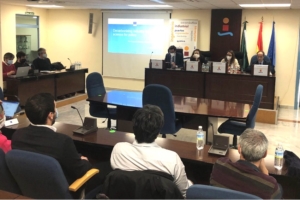
Joint dissemination event with projects funded by the Horizon 2020 programme of the EC.
In the afternoon of the first day, the meeting continued at University of Seville for the partners of SCARABEUS who had the opportunity to discuss face-to-face for the first time since the beginning of the pandemic. On the second day, the meeting moved to the premises of Abengoa. Upon conclusion of the meeting, the partners agreed on the good progress made by all work packages, despite the inevitable impact of the shortage and higher prices of certain critical materials on the schedule of experimental activities. This is nevertheless not to be concerned about as the first set of equipment for testing has already been delivered to Technical Universty of Viena.
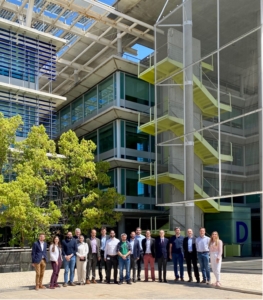
Group picture at Abengoa’s headquarter in Palmas Altas, Seville (from left: P. Rogríguez de Arriba, V. Ilyes, G. di Marcoberardino, A. Werner, S. Salah, A. Sayma, G. Manzolini, A. López, P. David, M. Fiori, E. Morosini, F. Crespi, D. Sánchez, X. Guerif, M. Ruggiero, P. Iora, N. Martínez)

